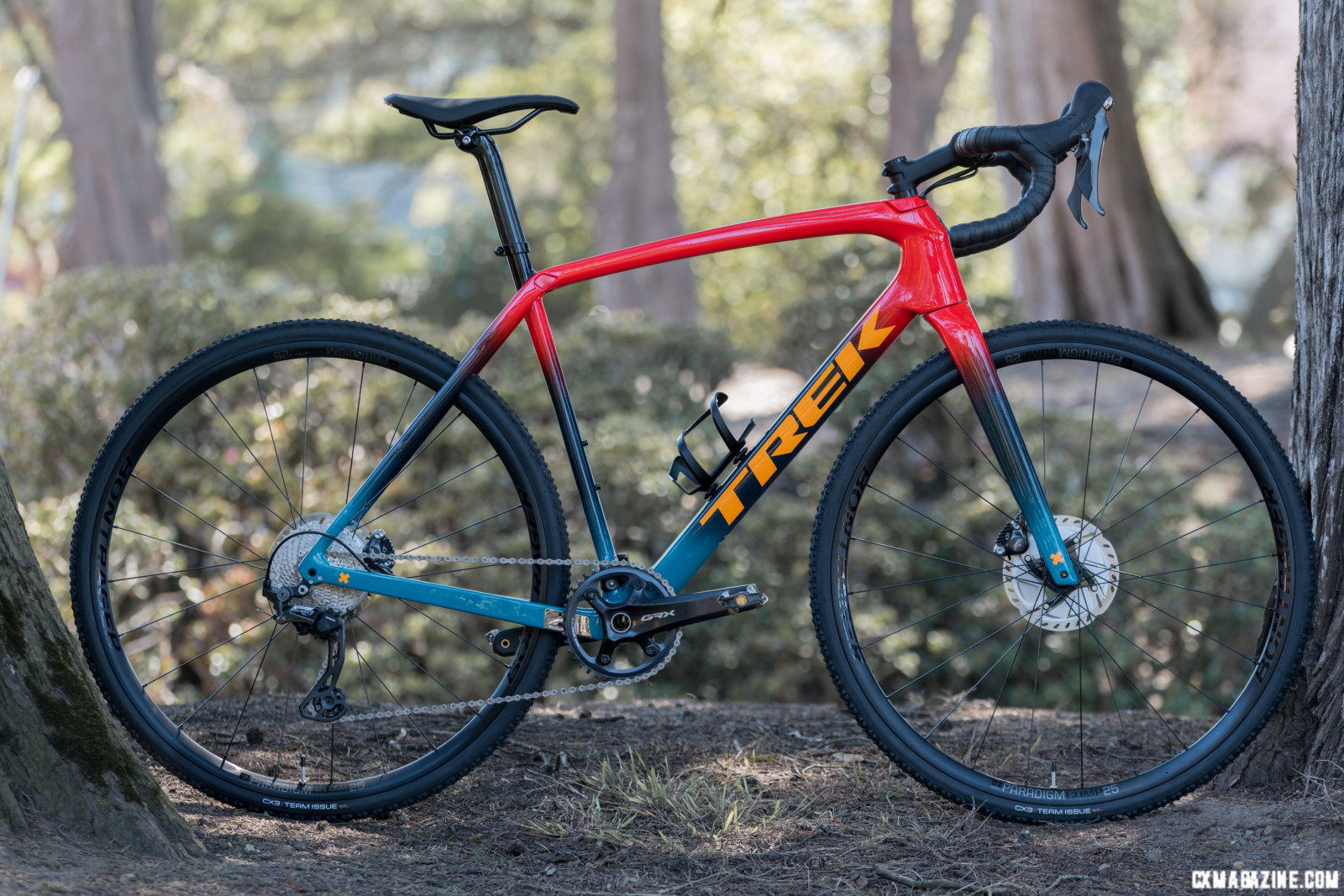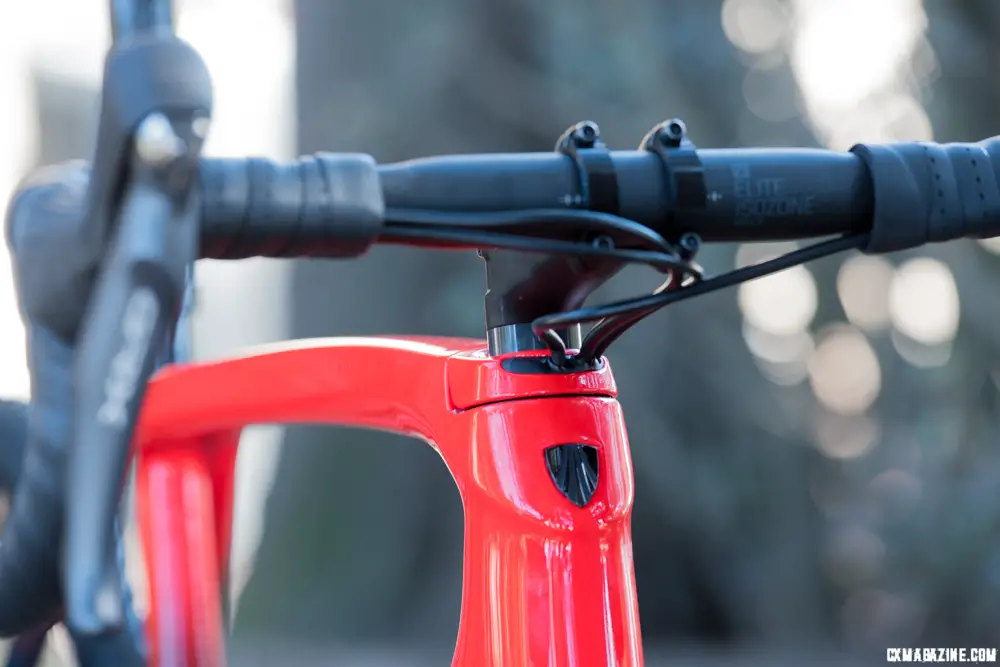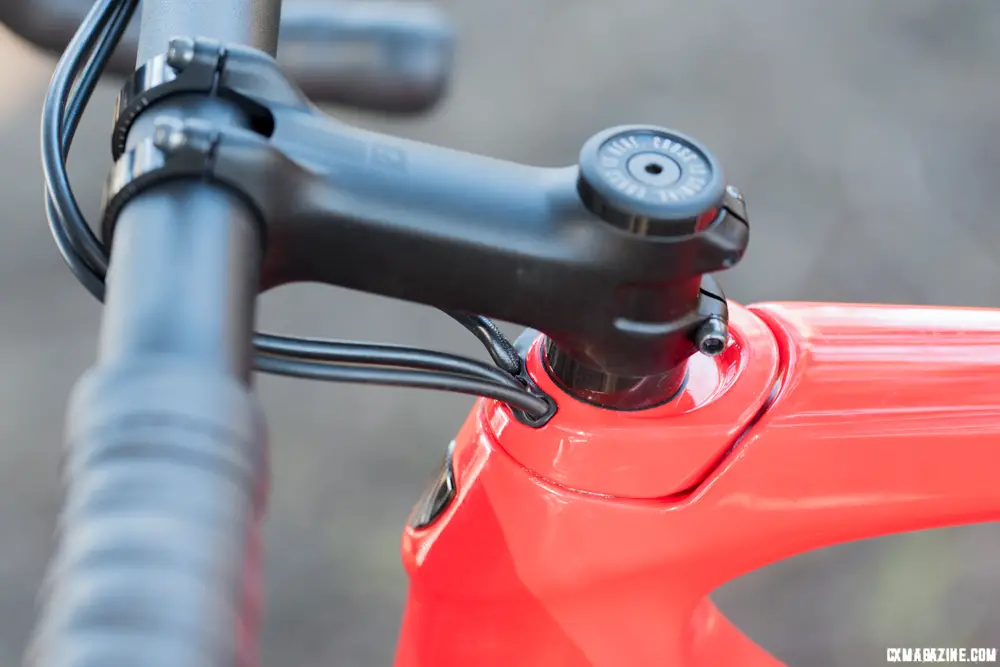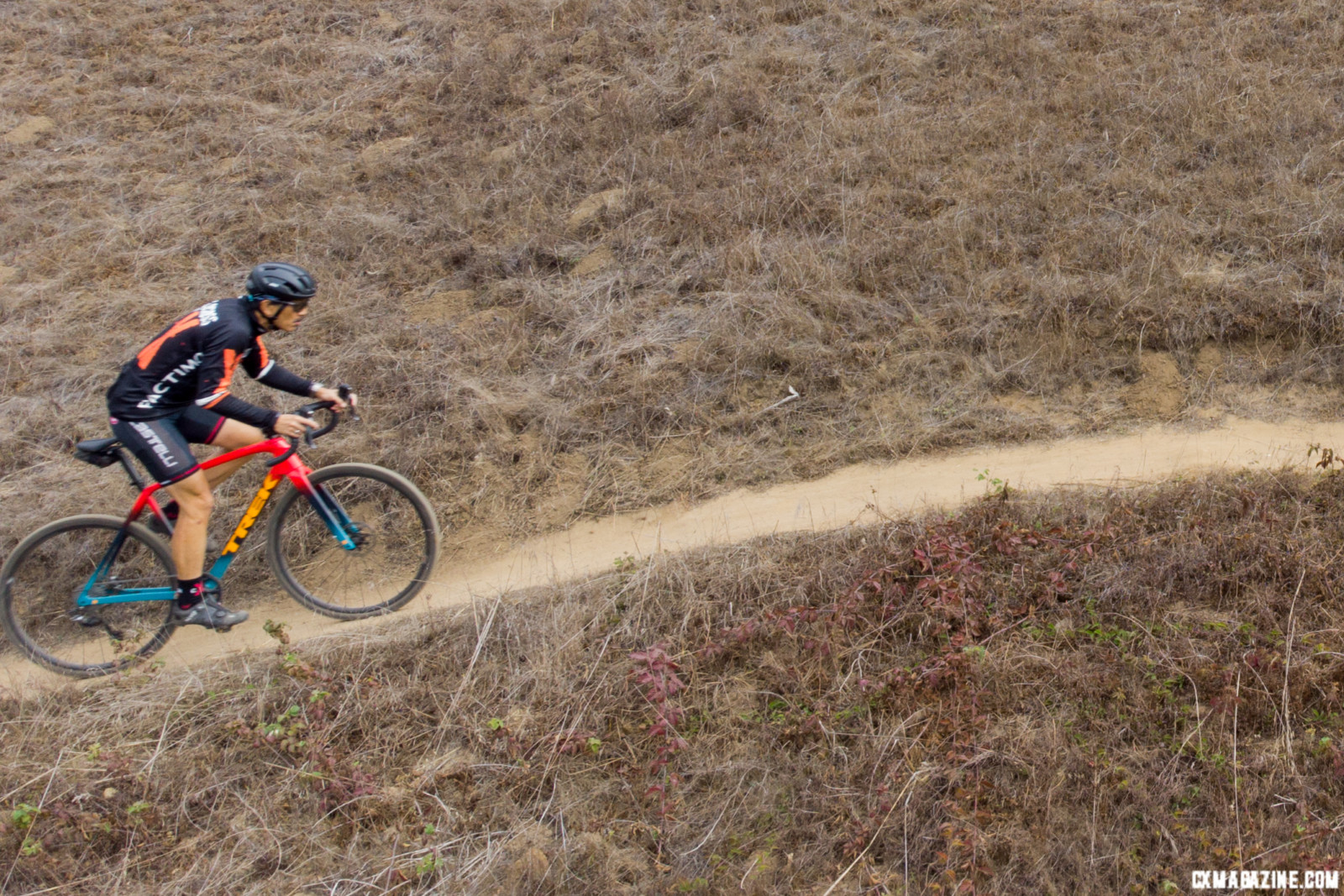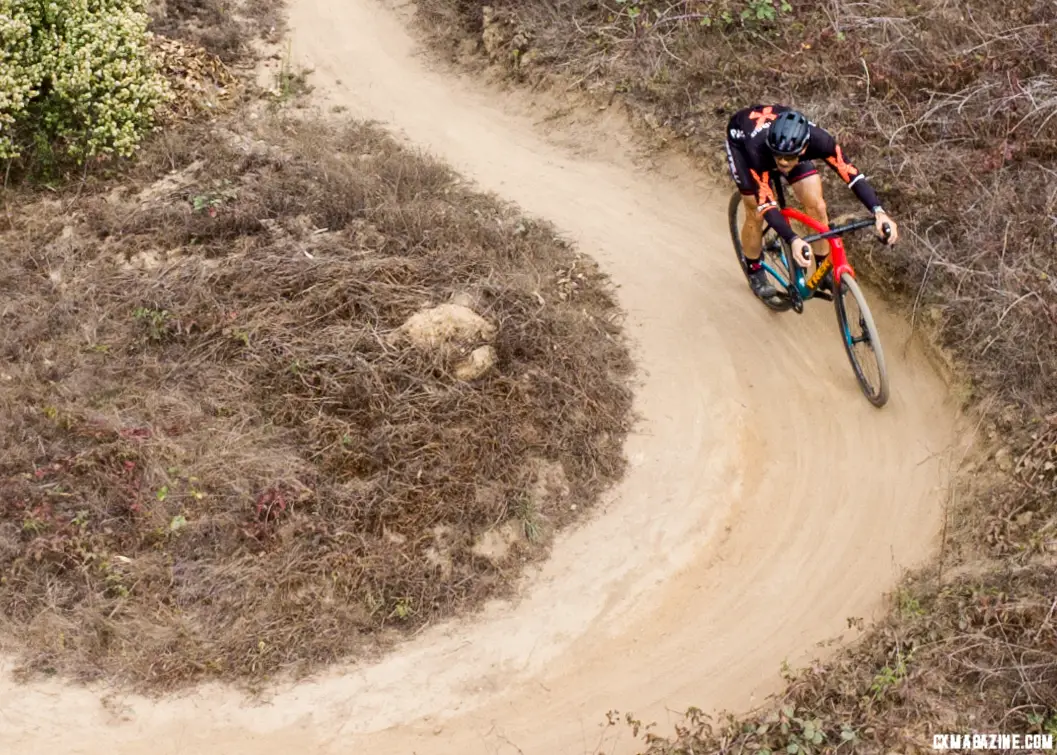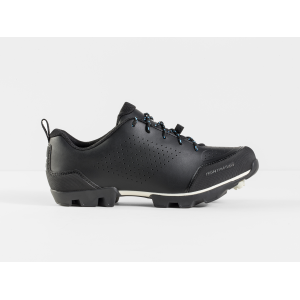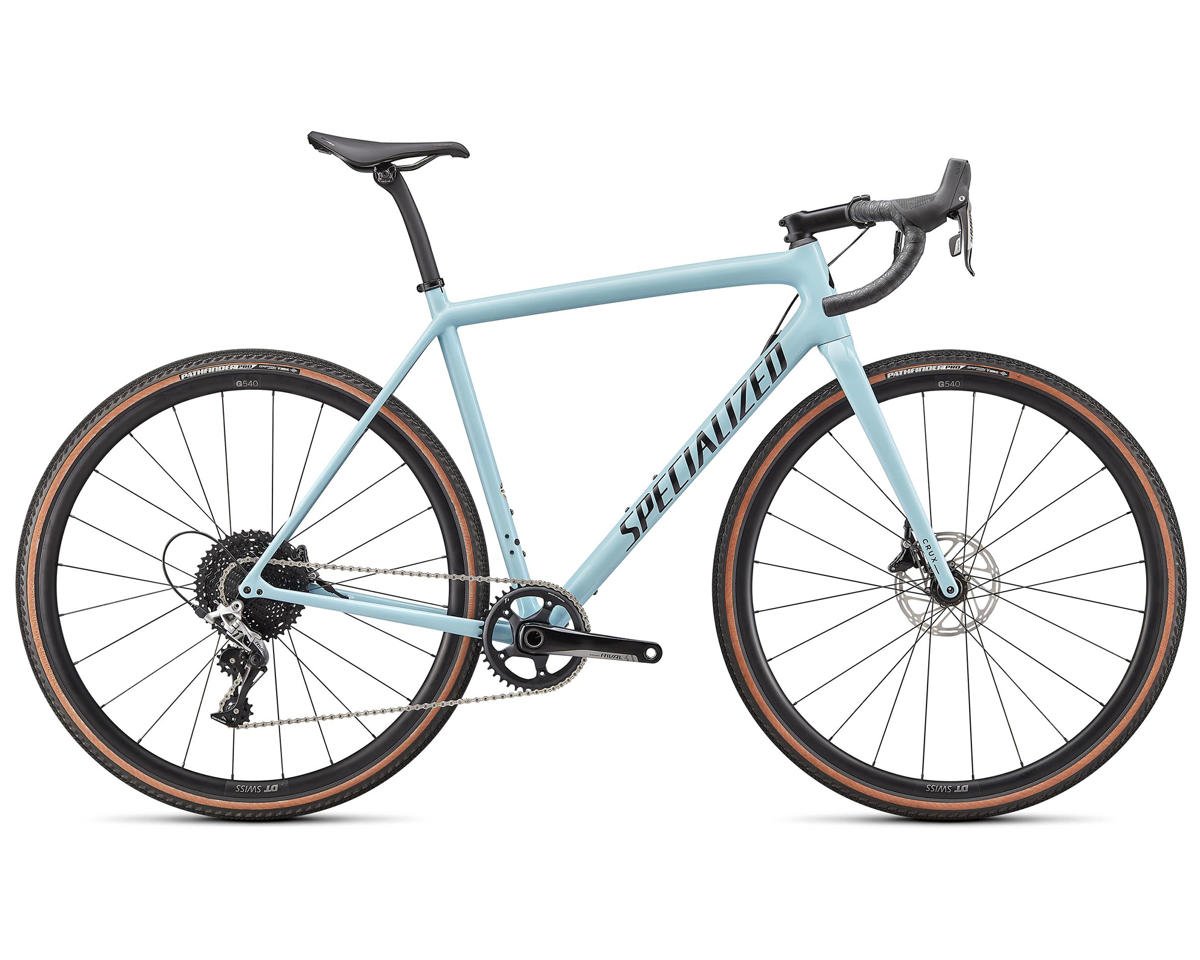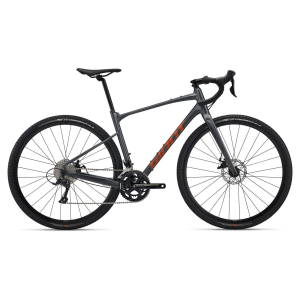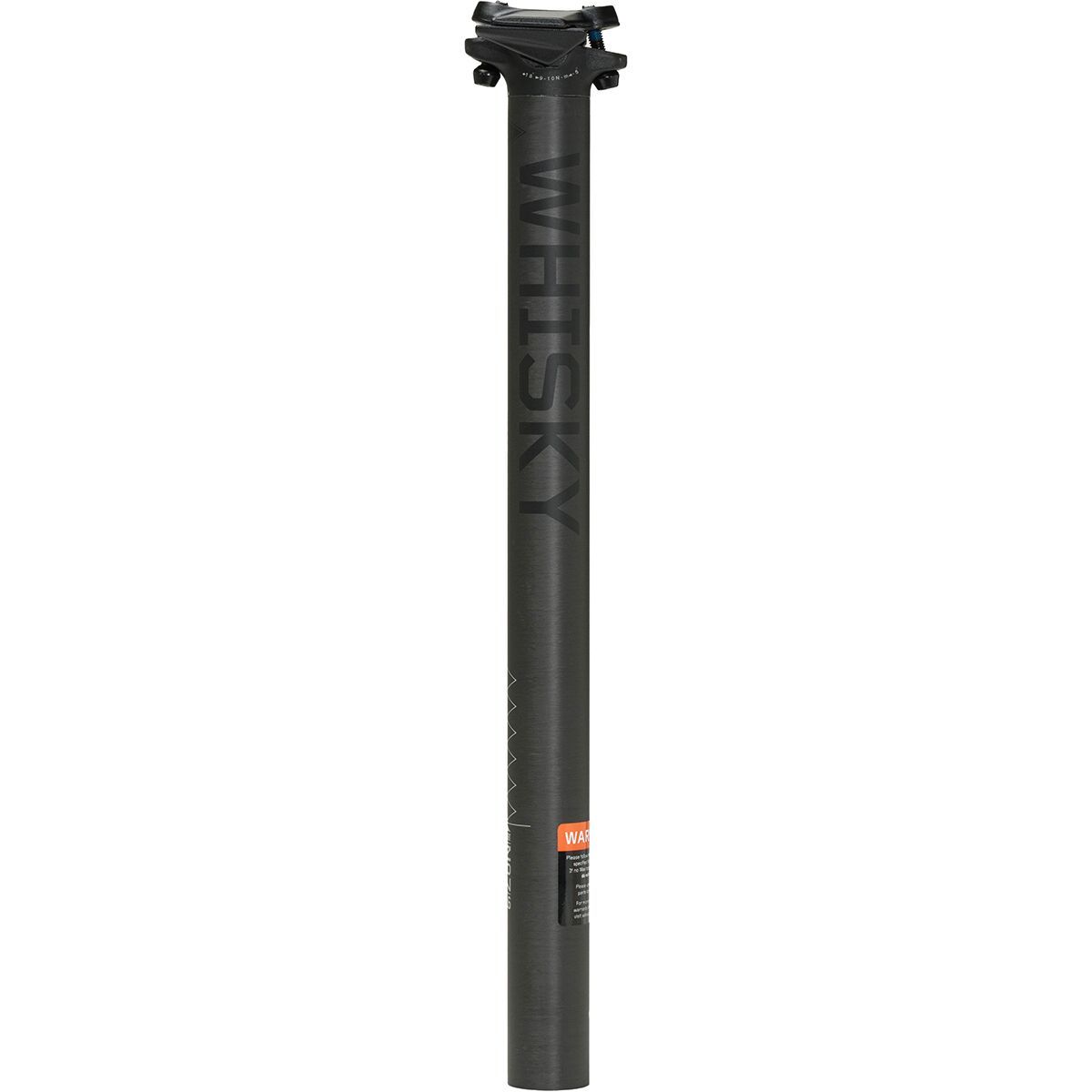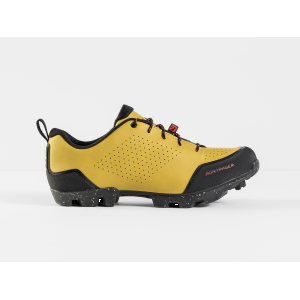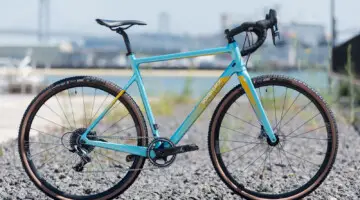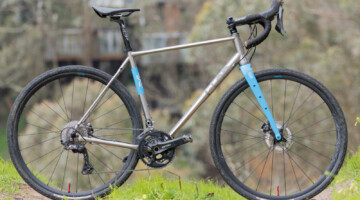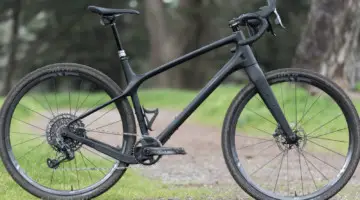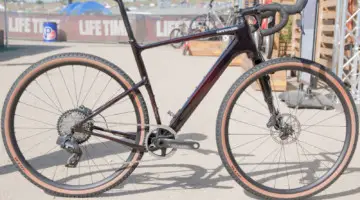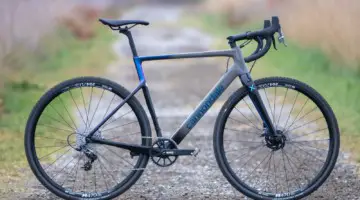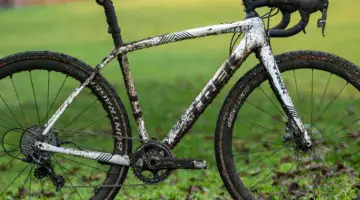Trek Introduced a new version of the Boone Cyclocross Race bike just as the 2021-2022 cyclocross season was starting after a partially canceled schedule in the pandemic year of 2020.
Unlike the new Specialized CruX we saw introduced at the Sea Otter Classic in October, Trek has kept the bike as a dedicated cyclocross race bike with “modern cyclocross” geometry and minimal accessory attachment points. The redesign includes a 250 gram lighter frame than the previous model, and a profile that takes cues from the Madone, Trek’s flagship road bike. The 2022 Boone is smoother in the wind, including a cleaner cable management system that Trek calls Control Freak.
Treks started appearing regularly on the podium of international cyclocross racing in 2012 with 15 time U.S. National Champion Katie Compton who rode an aluminum-framed prototype that later evolved into the Crockett.
Sven Nys, arguably the greatest cyclocross racer of all time, rode a Trek Boone from 2014 until he retired from racing at the end of the 2016 season. He continues to head the Beloise Trek Lions, a Belgian team sponsored by Trek. Lucinda Brand won her 2021 Cyclocross World Championship jersey on the last iteration of the Trek Boone. More recently both she and Lars Van der Haar won their respective races at the 2021 European Cyclocross Championships aboard the new 2022 Trek Boone.
There is no doubt that Nys, Brand and Van der Haar had input to Trek’s decision to keep the Boone as a dedicated cyclocross race bike, while other companies are making cyclocross models more gravel-friendly with geometry corrected for larger tires and long-distance comfort.
The Frame
The Boone is 600 series carbon fiber, two levels down from the top road racing models Madone and Emonda, and one level from Trek’s Domane that is ridden in the one-day European Spring Classics. Trek marketing manager Anders Ahlberg told me, “OCLV 600 was chosen for the right balance of properties to keep the weight down, but also to keep the cost competitive given that the Boone 6 is now our single complete CX bike. Every carbon bike we make comes with a ton of different specific fibers in it, used in different areas for different reasons. Think of a higher grade as one that contains a higher percentage and usage of higher modulus fibers.”
The Trek Boone geometry is unchanged from the previous version. Our 56cm review sample has a 68mm bottom bracket drop, 72-degree headtube angle, and 42.5cm chainstays. The reach and stack measurements are 387mm and 580mm respectively for a 56cm frame that has a 55.8cm effective top tube. The wheelbase is a fairly standard 102.0 cm. With a 45mm fork offset, the calculated trail is 67mm with a 33mm tire.
The general frame aesthetics and headtube shape are more streamlined in appearance than before, with a new cable routing through the headtube and IsoSpeed fork with a crown that integrates with the downtube. The 2022 Boone retains the rear IsoSpeed decoupler and the integrated seat mast with an external 135mm long carbon seat mast cap that holds the saddle and slides over the seat mast to offer some saddle height flexibility. The relative saddle height adjustment is limited to about 80mm, which is enough if you select the correct frame size. Trek does make a longer 175mm seatmast cap if you need a bit more height. The seatmast caps are also available with either a 5mm or 20mm setback and use a side-mount saddle rail clamp.
The fork is new and labeled IsoSpeed, and contributes to the integrated, streamlined style and lighter weight of the new Boone. The 2022 Boone does not have the front IsoSpeed decoupler that the Domane has with the rocker upper headset cup. Removing the front IsoSpeed decoupler that was on the previous version of the Boone is a large part of the frame weight savings, according to Ahlberg.
Significant to the more streamlined front end is the control line entry into the headtube. A bit less complicated than control lines run internally in the handlebars and stem, the control lines of the Boone enter the upper headset race cover through rubber-booted ports. This cover does not seal the upper headset bearing, it is cosmetic and acts as an entry point for the control lines. Easy on the power washer! Trek calls this Control Freak. The lines then enter the large headtube around the ordinary round tapered fork steerer and find their way to destinations internally via the downtube. The arrangement looks clean and is only a little more complicated than normal internal control line runs entering the downtube. The front brake hose runs inside the headtube straight into the left fork leg.
The 2022 Trek Boone uses 12mm through-axles (100mm front and 142mm rear), flat mount disc brake calipers, and follows the rest of Trek’s line with a move to a T-47 threaded internal bottom bracket. It has an 85.5mm wide bottom bracket shell and an insert threaded to M47 X 1.0mm bonded in. Based on Trek’s experience in the ’90s with threaded BB inserts, these new T47 inserts are slightly tri-lobed so they are keyed and resist rotational forces better. The chainstays are asymmetric, narrower on the drive side for crank clearance. Both front and rear through-axles have a 6mm Allen key fitting and Trek includes one lever with a 6mm head that snaps onto the through-axle. Trek could have had 2 axles with handles or no handles at all. This is a good solution: clean looking but with the convenience of always having a way to remove your wheels.
Trek had industry insiders abuzz when the 2022 Boone was introduced with a press release that erroneously indicated a 33mm maximum tire clearance. That was of course a nod to the tire size limit for UCI contested cyclocross races. In 2020 USAC ruled that non-UCI contested cyclocross races allow tire width up to 38mm. With a 40mm tire, we were able to achieve the industry standard 5mm tire-to-frame clearance on the Boone. Trek’s official stance is the Boone fits 38mm maximum tire width leaving more than 6mm clearance all around the tire, an admittedly conservative recommendation. So, the 2022 Boone can be ridden in any USAC race using a tire up to the maximum size for a given category. And yes, it can handle many gravel ties.
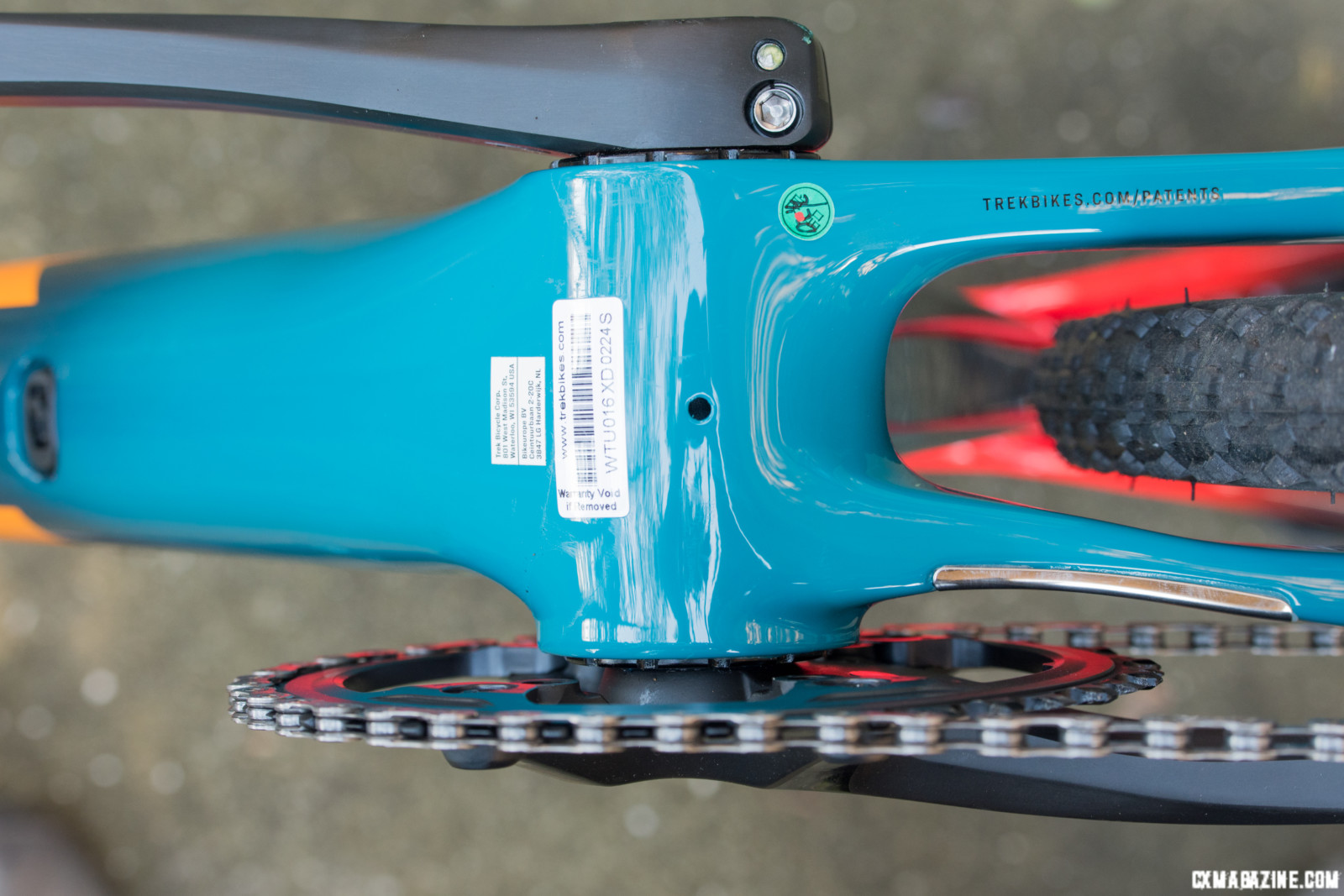
The new Trek Boone is shown with 33mm (measured) tires in place. Trek’s 85.5mm wide T47 threaded bottom bracket. © C. Lee/Cyclocross Magazine
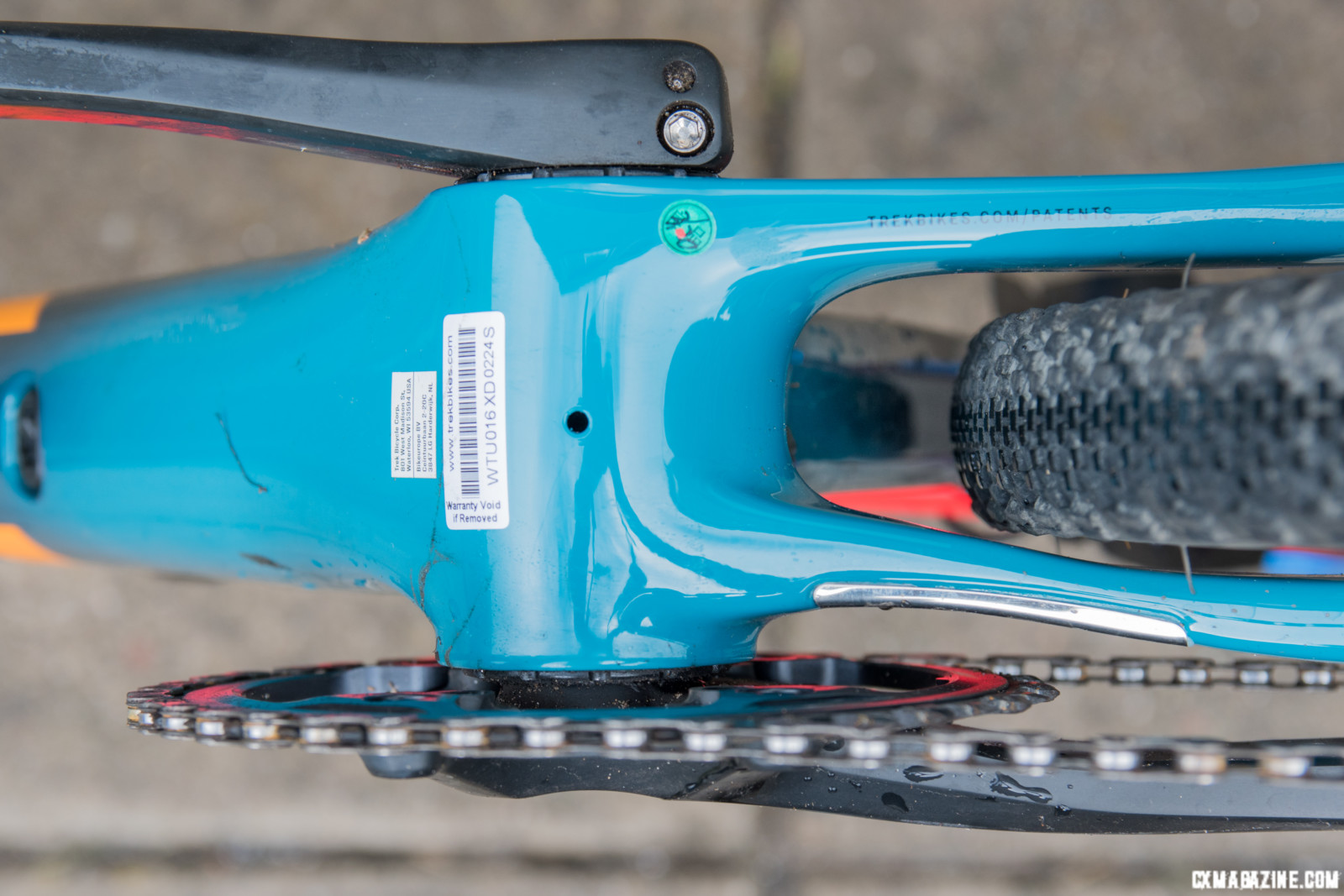
The Trek Boone with a 42mm (measured) tire in place. There is a 3mm tire-to-frame clearance on the drive side. © C. Lee/Cyclocross Magazine
The only accessory mountings are for two bottle cages in the usual positions of the down and seat tubes. Our review Boone 6 has a beautiful paint job that fades red to navy to teal from the upper to lower frame. I received numerous compliments about the bike’s aesthetics from non-cyclists and cyclists alike.
The Build
The Trek Boone 6 comes with a full Shimano GRX mechanical kit. The stock front chainring is 40 teeth, and the arm length varies with frame size. Our 56cm sample has a 172.5mm crankarm length. The Boone has a height-adjustable chain guide mounted directly to the frame to aid chain retention when using a single chainring. The chain guide not only keeps the chain from dropping inboard but also has a guide on top to keep the chain from riding off the top of the chainring. If you want to run a double chainring crank with a front derailleur, you will need a special clamp from Trek since the seat tube is not round and there is no provision for a standard bolt-on front derailleur hanger. There is a port on the back of the seat tube for the control line, whether it be cable housing or wire. The cassette is 11-34 11-speed. The 34t cassette is unique in the Shimano road cassette lineup since the 34 tooth cog overhangs the cog spider. This allows the cassette to fit old Shimano 8-9-10 speed cassette bodies. On an 11 speed body, it requires an inboard spacer. This is useful if you have old wheels laying around, but all those old wheels will likely be for rim brakes with quick-release hubs!
The cockpit consists of a Bontrager Elite IsoZone VR-CF (variable radius compact flare) aluminum bar. That supposedly comes with IsoZone pads, but I did not untape the bar to verify this particular fact. The stem is a Bontrager Pro aluminum model that is Blendr compatible. Blendr is a group of accessory mounts that integrate into the stem. I commented about this in an early review of the Trek Crockett two years ago.
The Paradigm Comp 25 wheelset is also from Bontrager, Trek’s component brand. The rim inner width is 25mm and the outer width is 31mm. The aluminum rim is has a tubeless compatible profile but comes with a standard rim strip and tubes installed. The tires are Bontrager CX3, an all-around tread labeled 32 but measures 33.5 on the wide rim. Still, there is little rim protection with this tire and rim combination. Though I did a lot of riding with this stock wheelset, much of my review riding was done with a familiar tire and wheel combination, the WTB Riddler 700 X 37 tires with the WTB CZR i23 wheelset I recently reviewed.
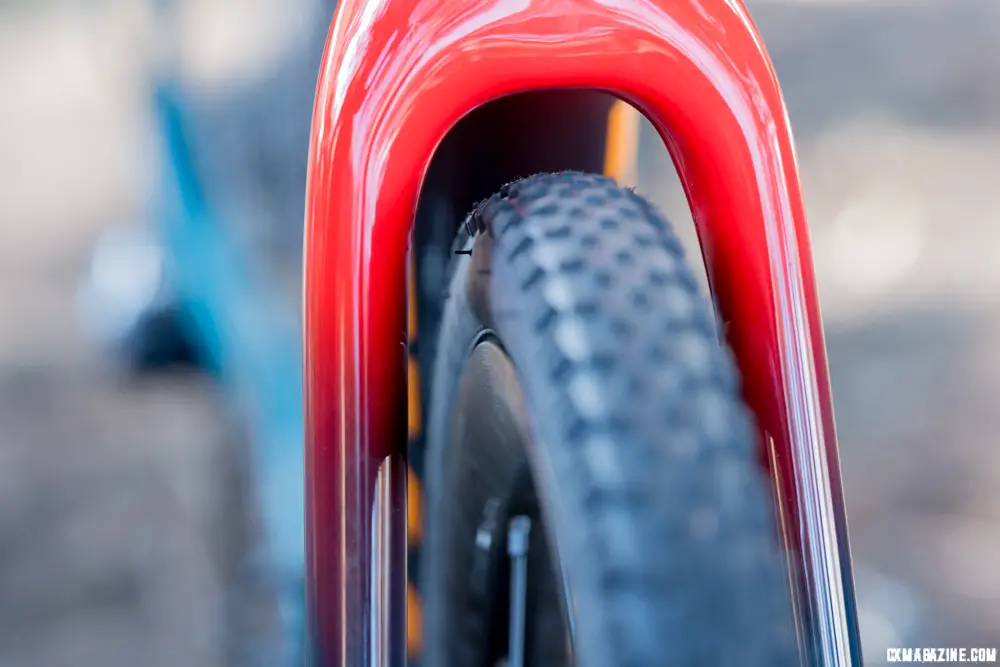
Bontrager CX3 32mm tire on a Bontrager Paradigm Comp rim with an internal width of 25mm measures 33.5mm but still offers minimal rim protection 0n the 31mm outer width rim. © C. Lee/Cyclocross Magazine
The complete Boone 6 Disc is 18.4 pounds. It is 11.1 pounds without the wheels, but with the through-axles.
The Ride
The new Boone is instantly familiar if you’ve ridden a lot of ’cross bikes over the years, as I’ve done. That said, every bike is nuanced, and this all-carbon, race geometry machine is no different, especially given Trek’s experience with carbon construction and the IsoSpeed decoupler and fork.
The Boone’s rear IsoSpeed decoupler works. When the saddle is weighted the seat mast flexes back firmly from the pivot point, and the seat tube flexes forward reciprocally. The rear IsoSpeed decoupler depends on the weight of the rider who must be seated to activate the system. It also depends on the height and setback of the saddle to leverage the seat mast. I weigh 155 pounds and my saddle height is 75cm. This places the saddle about 25cm above the IsoSpeed pivot and is only a centimeter above the minimum height for the size 56cm frame. You could argue that with my weight and low saddle height relative to the available range, I am least likely to benefit from the IsoSpeed decoupler.
That said, the Boone certainly has a smooth ride for a stiff bike, an interesting dichotomy. On bumpy terrain, I can stay in the saddle and continue to apply power to the pedals- more efficient and less fatiguing in many situations. I experienced this with the Boone 6 over bumpy track, rocky trails, washboard and broken pavement on fast flat sections, when climbing in the saddle to maintain traction, and even downhill in the case you need weight on the saddle for rear-wheel traction. The ride is not soft, bouncy, or springy and you are certainly aware of the surface, but the vibrations are muted and bumpiness is damped. I can conclude Trek’s use of the IsoSpeed decoupler provides a desirable ride quality from the saddle on the Boone. The Aluminum Trek Crockett reviewed 2 years ago had a similarly smooth ride without the rear IsoSpeed decoupler, as do other bikes, so this quality can be engineered in different ways.
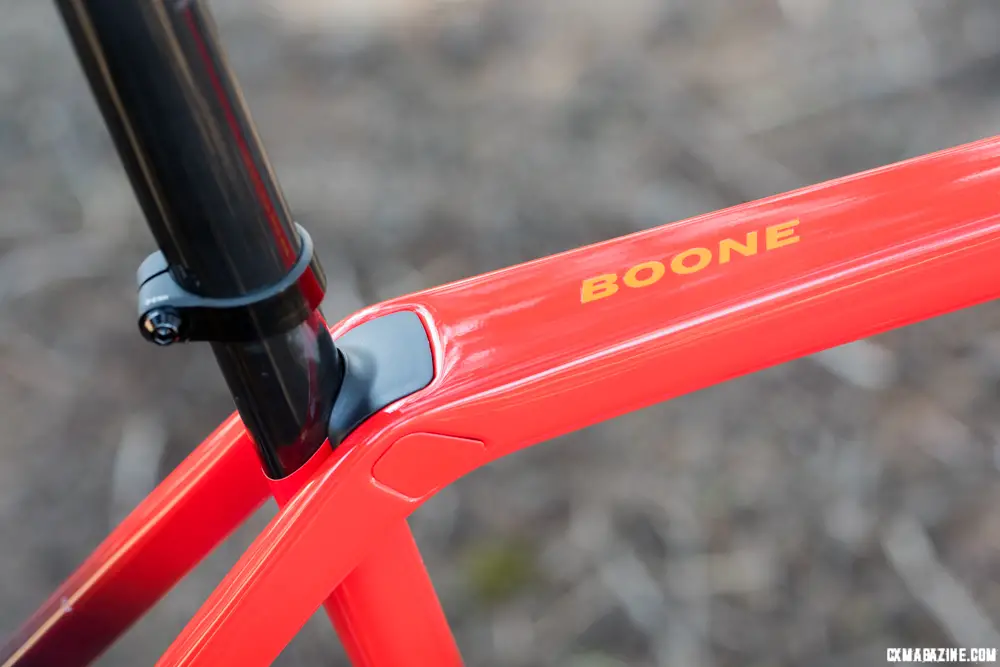
Trek Boone rear Isospeed decoupler allows the seat mast to flex for compliance over rough terrain. © C. Lee/Cyclocross Magazine
Out of the saddle, the rear IsoDecoupler does not play a role in ride quality-that is left to frame design and carbon layup engineering. The Boone is on par with other top-end cyclocross bikes I recall such as the last Cannondale Super-X. You jump on the pedals and the bike shoots out from under you. Throw it into a turn, on the road or off, and it follows your command. In transitions from pavement to dirt and back the front end does not waver. Descending out of the saddle over a rocky trail that burped both tires relied on the fork to provide the damping without the IsoSpeed decoupler. It did a fine job, keeping the bike online, under control without bucking my hands off the bars.
For ’cross racing, the Boone has a fairly level top tube that is easy to grasp. It has a flat profile that is comfortable on your shoulder when portaging. The Control Freak cable management keeps control lines out of the way but does not restrict steering at all. When washing the bike, there was no more water imbibed in the bearings than would normally occur. Any water following the control lines will go down the fork leg or into the downtube as on other frames. The down tube is massive-it comes off of a huge headtube and flares to the entire width of the bottom bracket. I could not put my medium-sized hand around the tube, so lifting from the downtube to shoulder the bike requires some adjustment. The large downtube also has thin walls that flex if you squeeze it, so don’t hit it hard.
Shimano GRX mechanical with a single chainring is a good choice for the Boone 6 with a caveat. ‘Cross racers in the U.S. have long had a penchant for a single ring set up. Thanks to SRAM for making the setup more reliable with the combination of a wide-narrow chainring and clutch rear derailleur, the 1x has become the choice for many off-road riders. Shimano’s take on the single ring setup works fine, but moving the chain line out 2.5mm with the GRX crankset means there is a greater chain angle in the lower gears since the cassette is in the same place. The Boone does not need the extra clearance afforded by the GRX crank. 2.5mm doesn’t seem like much, but considering 11-speed cassette cogs are spaced 3.74mm apart that is nearly one cog further outboard. I think the GRX is a bit noisier in the lower gears, and the chain crawls off the large cog when pedaled backward more often than with a Shimano road crank or with the SRAM setup. The ‘stock’ gears offer a low ratio of 1:1.18 or 31.8 gear inches, lower than the old standard 36 X 28 which yields 1:1.29 or 34.8 gear inches.
The included GRX rear derailleur is the RD RX810 for 2X11 with a 34T maximum cog capacity. I thought this a curious choice for a bike that came set up as 1X. If you want a lower gear or wider gear range than is on the Boone 6, you would officially need the GRX RD RX812 to use an 11-42 cassette or add a hanger extension, or you could convert to a double chainring setup with a front derailleur which is considerably more expensive and complicated.
In the case of the 2X conversion, you’ll need an STI lever, and the front derailleur must be a GRX due to the 2.5mm outboard spacing, you will need the Trek Boone 2022 clamp, and the Boone does not have a cable housing stop, so thankfully the GRX FD RX810-F has a housing stop built-in. Shimano is conservative with specified rear derailleur capacity. As an example, I have consistently used 32T cogs with old Shimano road rear derailleurs specified as 28T maximum without a hitch. That said, extending any Shimano derailleur beyond the stated capacity, whether it be with available extension links or by experimentation, is at the user’s risk. An 11-36 should work fine, but pushing it to an 11-40 or 11-42 gets dicey, not to mention potential cog pitch differences.
It’s a limitation that can’t be overstated. The gearing is perfect for Elite racers and flatter courses for the rest of us, but many potential retail-paying customers will need more versatility. They’ll ride trails and gravel when not racing, and might need a lower gear for hillier courses. Buyer beware, you may be in for some drivetrain expenses if the 40×34 gear doesn’t meet your needs. That tall low gear kept the bike in the stable whenever climbs were on the menu.
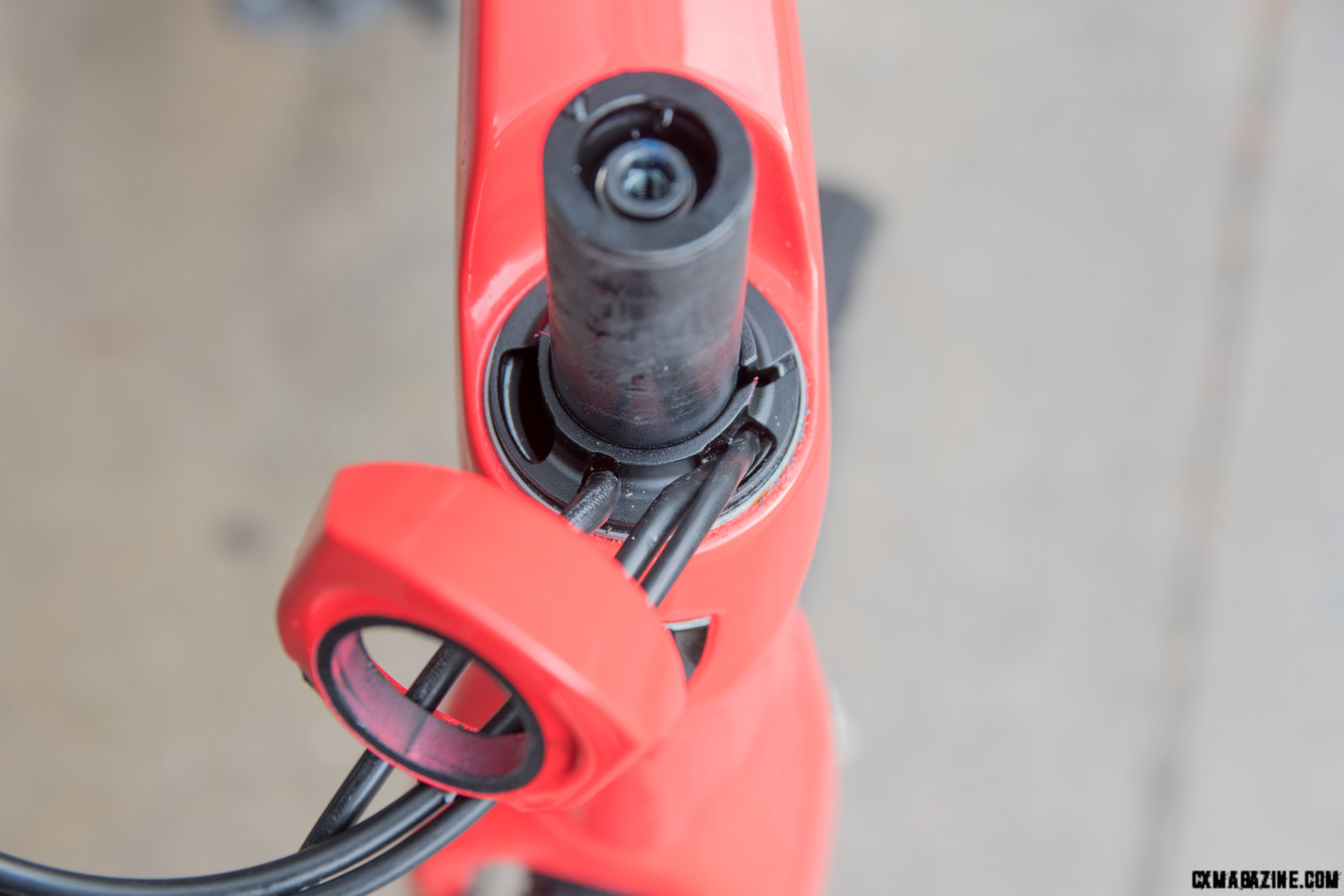
Trek Control Freak control line management unveiled. © C. Lee/Cyclocross Magazine
The included Bontrager Paradigm Comp 25 wheelset is a solid price-point choice that weighs over 1700 grams. It is tubeless-ready but comes with a regular rim strip and tubes inside the Bontrager CX 3 tires. The tires are a good all-around ’cross racing choice and conversion of the wheels to tubeless requires the Bontrager tubeless plastic strip which has a bead shelf profile, valves and sealant. I have substituted tape instead of the Bontrager tubeless strip, but it requires a couple of layers to make a tight bead seal, so my advice is to use the Bontrager tubeless strip. Though the Paradigm Comp25 is a solid starter wheelset, the Boone deserves a more light and lively wheelset.
The Verdict
Before gravel riding and racing became its own category, cyclocross racers used their ’cross bikes for off-season mixed-terrain riding. The 2022 Trek Boone is a great cyclocross race bike that is versatile in just that way. It is true to its pro-racing roots with a UCI-approved frame and geometry that suits the European-style cyclocross courses that it spends a lot of time on. I love its response to rider input and maneuverability on fast, tight courses. Trek’s rear IsoSpeed decoupler adds to the superb ride allowing the rider a bit more seated comfort, power transfer and control.
It does not suit the rider who is interested in multi-day adventures or bike camping since the only accessory mounts are for two bottles. The maximum tire that can comfortably fit in the frame is 40mm to meet the industry-standard 5mm tire-to-frame clearance, which is enough for most gravel races. Trek produced the Checkpoint with more tire clearance, adjusted geometry, and many more accessory mounting points for those who desire that.
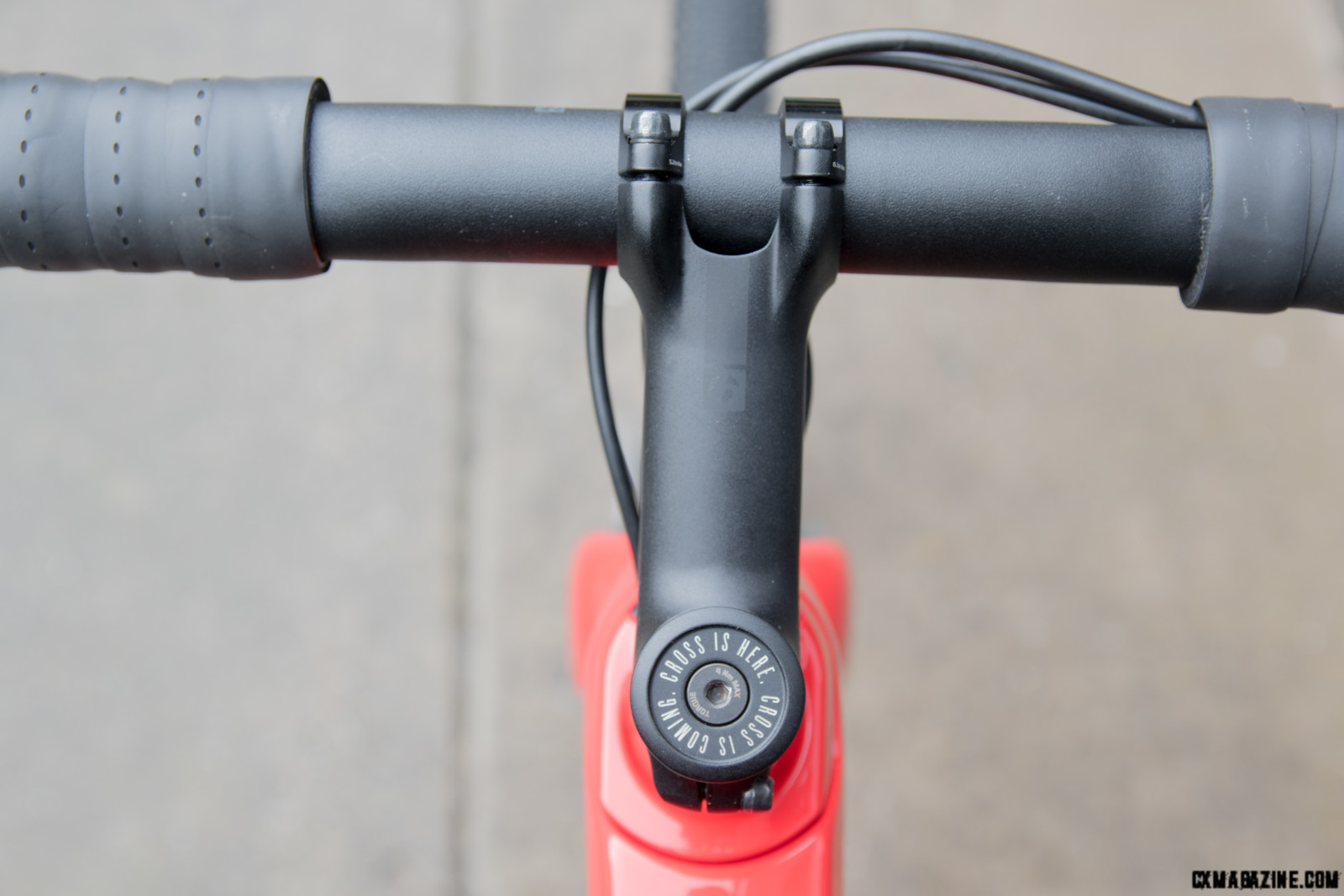
Trek’s top cap tells what this bike is for. © C. Lee/Cyclocross Magazine
You can have one bike to do it all, choose the Checkpoint. If you like a racy bike that can do fast one-day mixed terrain rides off-season, then the Boone is a great choice if you can afford some drivetrain mods. If you have a tighter budget, but like the latter, the Trek Crockett is one to look at in the Trek family.
2022 Trek Boone Cyclocross Bike Specs:
MSRP: $4030 USD
Frame: Carbon Fiber monocoque
Fork: Trek IsoSpeed Carbon Fiber with carbon steerer: 1 ⅛” -1 ½”
Weight: 18.4 pounds, as tested no pedals; 11.1lbs without wheels or pedals
Shifters: Shimano GRX mechanical11 speed
Crankset: Shimano GRX 40T single chainring
Brakes: Shimano GRX Shimano RT-800 rotors 160mm front, 160mm rear
Cockpit: Bontrager Aluminum, 10cm stem, 42cm bar
Seatpost: Trek seatmast
Saddle: Bontrager Verse Comp, steel rails
Wheels: Bontrager Paradigm, 25mm inner width aluminum
Tires: Bontrager CX3 team edition 700X33 tubeless
Warranty: Lifetime, frame and fork (original owner)
Country of origin: Taiwan
More Info: trekbikes.com













